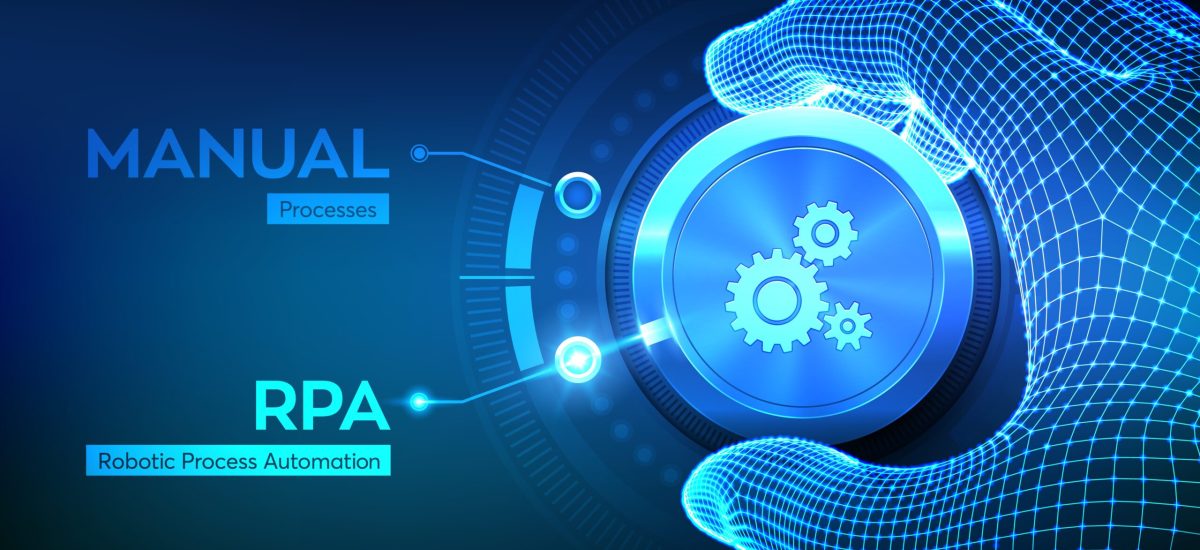Cost reductions and process efficiencies are at the forefront of organizational goals, especially for the finance function. Given that labour is likely a company’s biggest expense, it is no surprise that more and more companies have adopted automation and agile methodologies to allow their employees to focus on more strategic tasks. One such form of automation that is growing dramatically is Robotics Process Automation (RPA). This is evident as the global market size for RPA is forecasted to grow at a compounded annual growth rate (CAGR) of more than 40% from 2020-2027.
RPA refers to the application of technology defined by instructions. In other words, RPA refers to using technology to automate repetitive tasks. One example of RPA relevant to the finance function relates to bank reconciliations. While bank reconciliations are a necessary task for data reconciliation purposes, the process itself can be quite time consuming and repetitive. Stakeholders stand to benefit from RPA by automatically performing repetitive tasks such as:
- Login to banking website and download statement
- Reconcile balance and transactions to Enterprise Resource Planning (ERP) software
- Create journal entries to resolve discrepancies
The value of RPA in this example is demonstrated through RPA’s ability to:
- Automate keyboard strokes and mouse clicks (entering login credentials and navigating menus)
- Document the results of the process for accuracy and validation purposes
- Interact with cross-platform compatibility (RPA can interact with multiple software systems at once
(web browser, Microsoft Office)) - And ultimately, significantly reduce the effort required for what would otherwise be an intensive manual effort
While the value of RPA can be reaped throughout many organizational units, the office of finance stands to gain a tremendous amount from leveraging RPA. The objective of this blog is to highlight the benefits of RPA to finance teams and illustrate that it serves as a mechanism to value creation. Before proceeding to discuss the ‘how’ aspect, we will discuss the ‘why’, as in why should finance teams adopt RPA?

The nature of work that finance does right now involves team members spending a significant amount of time on repetitive routine tasks, specifically, research suggests finance teams spend 49 percent of their time on traditional transactional activities such as journal entries and reconciliations. As a result, they are only able to devote a limited amount of time performing value add analysis and making business driven decisions supported by their financial results. One of the most important benefits of RPA is the ability to create time and cost savings through the automation of those standardized, repetitive tasks. Due to the complexity and importance on effective forecasting, especially in today’s age where COVID has emphasized this due to the uncertainty, forecasting does require a significant amount of expertise. Using RPA to automate these tasks would make such tasks easier and shift the amount of time spent on lower value add tasks like data validation and reconciliation, to more value-producing activities such as decision analysis and strategic planning.
Furthermore, this introduces the notion of finance teams ‘doing more with less’. By way of implementing RPA and automating the mundane tasks that the finance function would normally spend a considerable amount of time on, organizations are in a position to enable finance teams to dedicate more of their efforts to value-creation initiatives (where they are currently spending less than 25% of their time). Such efforts will allow finance members to become ‘business partners’ to senior management and expert contributors. Consequently, this yields improved business results.
Transitioning to the technical benefits of RPA, increased accuracy and having an improved audit trial are key outcomes. The latter is important to abide with compliance procedures, which have a great deal of importance in the finance function. Additionally, there is improved reliability because of RPA solutions being available at any time, in addition to eliminating the possibility of human error.
In sum, robotics process automation serves as an opportunity for finance teams to do more with less, resulting in lean and agile outcomes that provide numerous benefits to the team and organization related to time, cost, operations, and much more, all of which lead to the creation of long-term value. However, to effectively leverage RPA, finance leaders, should ensure that the ultimate objective of automation is not to reduce tasks, but rather to enable finance teams to focus on strategic initiatives which can provide long-term value to their companies.
Click here to view related events hosted by TGG on this topic matter.

